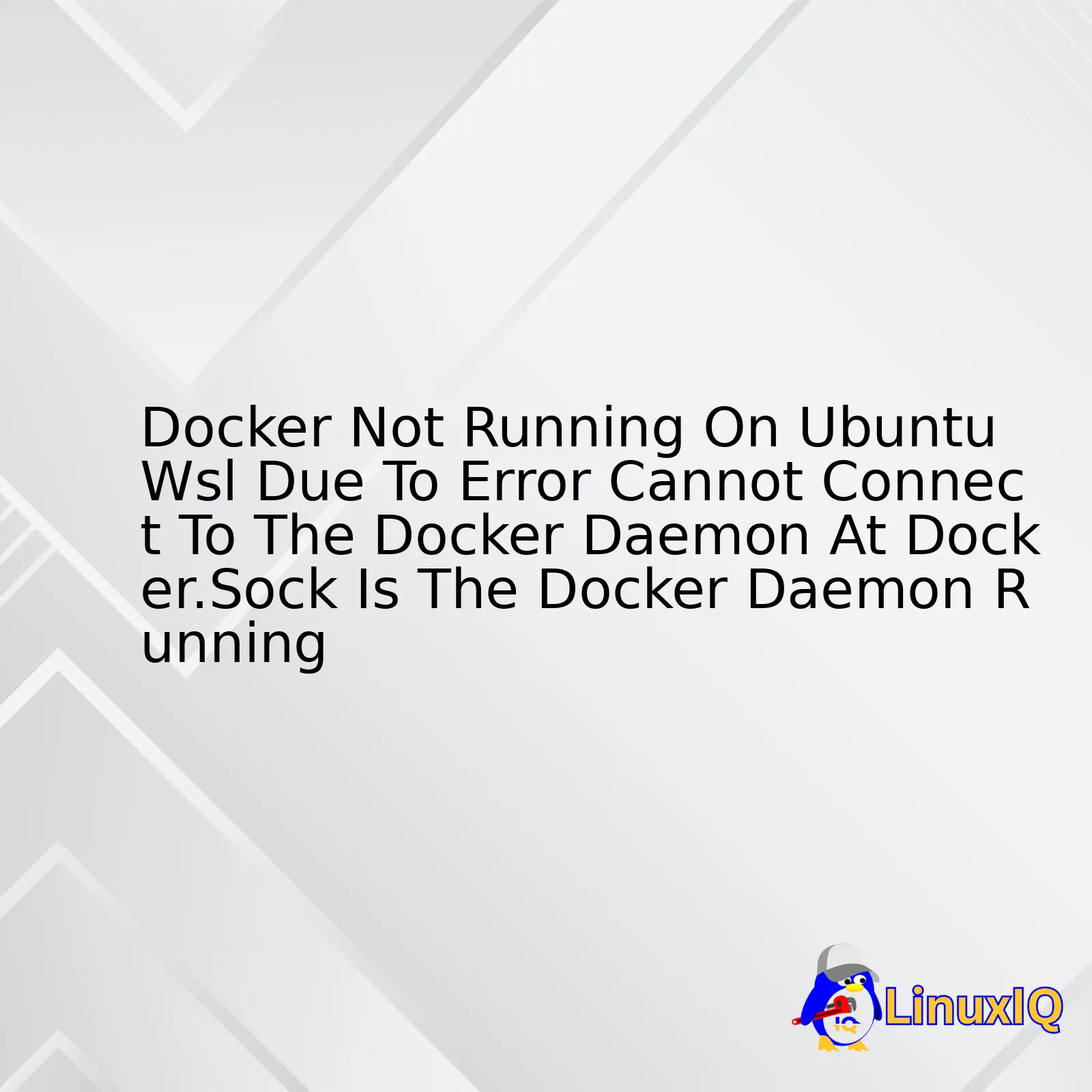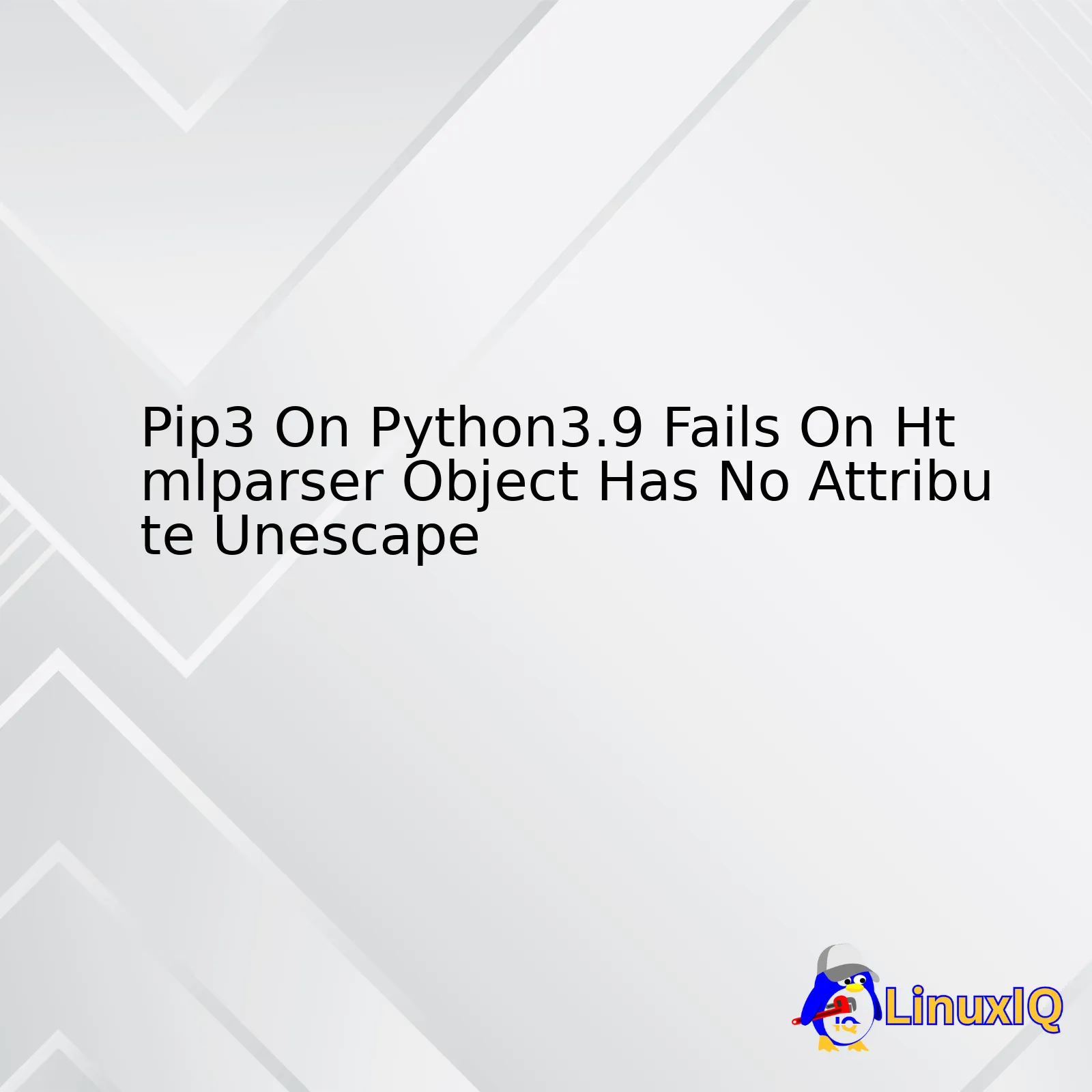Introduction
In the world of modern software development and Linux Administration, Docker has emerged as a transformative technology. It has fundamentally changed how we build, ship, and run applications by leveraging OS-level virtualization on the Linux Kernel. While Docker is cross-platform, its roots and deepest integrations are in Linux, making a thorough understanding of Linux Docker essential for any DevOps professional, system administrator, or developer. This powerful combination enables unparalleled efficiency, portability, and scalability, from a developer’s laptop running Ubuntu to massive production clusters on a Linux Server in the cloud.
This article provides a comprehensive deep dive into Linux Docker. We will move beyond the basic “hello-world” examples to explore the underlying kernel features that make containers possible. We’ll walk through practical, real-world examples of building multi-container applications, delve into advanced performance monitoring techniques using powerful Linux tools like perf, and cover essential best practices for security and optimization. Whether you’re managing a Red Hat Linux server, developing on Fedora, or deploying to a Debian-based cloud instance, this guide will equip you with the knowledge to harness the full potential of Docker in a Linux environment.
Section 1: The Linux Kernel’s Role in Docker’s Magic
To truly master Docker on Linux, one must first understand that Docker is not a form of traditional virtualization like VirtualBox or VMware. It doesn’t emulate an entire operating system. Instead, it leverages specific features built directly into the Linux Kernel to provide process isolation and resource management. This is why Docker containers are so lightweight and fast—they are essentially sandboxed Linux processes sharing the host’s kernel.
Namespaces: The Foundation of Isolation
Namespaces are a cornerstone of containerization. They work by wrapping a global system resource in an abstraction that makes it appear to the processes within the namespace that they have their own isolated instance of that resource. Docker utilizes several key namespaces:
- PID (Process ID): Isolates the process ID number space. A process inside a container can have PID 1, but on the host system, it will have a different, non-privileged PID.
- NET (Network): Provides network isolation. Each container gets its own virtual network stack, including network interfaces, IP addresses, and routing tables. This is crucial for Linux Networking within containers.
- MNT (Mount): Isolates filesystem mount points. This allows each container to have its own root filesystem without affecting the host’s filesystem.
- UTS (UNIX Timesharing System): Isolates the hostname and domain name, allowing each container to have its own unique hostname.
- IPC (Inter-Process Communication): Isolates IPC resources like message queues and shared memory.
- User: Isolates user and group IDs, enabling a process to have root privileges inside the container but be an unprivileged user on the host.
Control Groups (cgroups): Managing Resources
While namespaces provide isolation, Control Groups (cgroups) are responsible for resource accounting and limiting. A system administrator can use cgroups to allocate specific amounts of CPU, memory, and I/O bandwidth to a container. This prevents a single container from consuming all system resources and impacting other containers or the host itself. When you run a Docker command with flags like --memory or --cpus, you are directly manipulating cgroups.
Putting It Together: A Simple Dockerfile
A Dockerfile is a script containing a series of instructions on how to build a Docker image. Let’s look at a simple example for an Nginx web server, a common tool for any Linux Web Server administrator.

# Use an official Debian Linux based image as a parent image
FROM debian:bullseye-slim
# Set non-interactive frontend for package installation
ENV DEBIAN_FRONTEND=noninteractive
# Use apt to install nginx. This is a common Linux Command.
# The '&&' chains commands to reduce image layers.
RUN apt-get update && \
apt-get install -y nginx && \
apt-get clean && \
rm -rf /var/lib/apt/lists/*
# Copy a custom index file into the container
COPY index.html /var/www/html/
# Expose port 80 to the outside world
EXPOSE 80
# Command to run when the container launches
CMD ["nginx", "-g", "daemon off;"]This Dockerfile demonstrates fundamental Linux Administration tasks within the context of building an image: using a package manager (apt-get), managing files, and running a service. When you run this container, the Linux Kernel applies namespaces and cgroups to ensure the Nginx process is isolated and managed effectively.
Section 2: Building and Managing Multi-Container Applications
Real-world applications are rarely a single service. They often consist of multiple components, such as a web frontend, a backend API, and a database. Managing these services individually with docker run commands can be cumbersome. This is where Docker Compose, a key tool in the Linux DevOps toolkit, comes in.
Introducing Docker Compose
Docker Compose allows you to define and run multi-container Docker applications using a simple YAML file. It handles the creation of networks, volumes, and containers based on your configuration, making it incredibly easy to manage the entire application stack. This is particularly useful for Python Automation and development workflows.
Example: A Python Flask App with a PostgreSQL Database
Let’s create a simple web application using Python’s Flask framework that connects to a PostgreSQL Linux database. This setup is common for many web services.
First, our simple Python application (app.py):
import os
from flask import Flask
import psycopg2
app = Flask(__name__)
def get_db_connection():
conn = psycopg2.connect(
host=os.environ.get('DB_HOST'),
database=os.environ.get('DB_NAME'),
user=os.environ.get('DB_USER'),
password=os.environ.get('DB_PASS')
)
return conn
@app.route('/')
def hello():
try:
conn = get_db_connection()
db_version = conn.cursor()
db_version.execute('SELECT version();')
version = db_version.fetchone()
conn.close()
return f"Hello, World! Connected to PostgreSQL version: {version[0]}"
except Exception as e:
return f"Database connection failed: {e}", 500
if __name__ == "__main__":
app.run(host='0.0.0.0', port=5000)Next, we define the entire stack in a docker-compose.yml file. This file orchestrates the web app, the database, and the networking between them.
version: '3.8'
services:
# Web service (Python Flask App)
web:
build: .
ports:
- "5000:5000"
volumes:
- .:/app
environment:
- FLASK_APP=app.py
- FLASK_RUN_HOST=0.0.0.0
- DB_HOST=db
- DB_NAME=postgres
- DB_USER=postgres
- DB_PASS=mysecretpassword
depends_on:
- db
# Database service (PostgreSQL)
db:
image: postgres:14-alpine
volumes:
- postgres_data:/var/lib/postgresql/data/
environment:
- POSTGRES_DB=postgres
- POSTGRES_USER=postgres
- POSTGRES_PASSWORD=mysecretpassword
volumes:
postgres_data:To run this, you would also need a simple Dockerfile for the web service and a requirements.txt file (listing `Flask` and `psycopg2-binary`). With these files in place, a single command in your Linux Terminal, docker-compose up, will build the Python image, pull the PostgreSQL image, create a shared network, and start both containers. The web service can reach the database using the hostname `db` because Docker Compose’s networking provides DNS resolution between services.
Section 3: Advanced Performance Monitoring and Profiling
Once your application is running, understanding its performance is critical. While tools like docker stats provide a high-level overview of CPU and memory usage, true Performance Monitoring requires deeper introspection, especially on Linux. The perf tool, part of the Linux Kernel source, is an incredibly powerful profiler that can give you detailed insights into your application’s behavior at the hardware level.

Using `perf` Inside a Docker Container
Running perf inside a container presents a challenge: by default, containers are unprivileged and restricted from accessing the host’s performance monitoring unit (PMU). To grant the necessary permissions, you must start the container with specific capabilities. The SYS_ADMIN capability is often required for deep system-level profiling.
Let’s imagine we have a CPU-intensive application running inside a container named `my-app-container`. To profile it from the host, you first need to find the process ID (PID) of the application on the host system.
# Find the top-level PID of the container on the host
HOST_PID=$(docker inspect --format '{{.State.Pid}}' my-app-container)
# Run perf stat on that specific PID for 10 seconds
sudo perf stat -p $HOST_PID -- sleep 10However, a more integrated approach is to run perf directly *inside* the container. This is useful for profiling specific application binaries without needing host-level access during runtime. To do this, you must install `linux-perf` (or a similar package depending on your Linux Distribution) in your Docker image and launch the container with the necessary privileges.
Here is how you would launch a container based on an Ubuntu Tutorial image, ready for profiling:
# Launch a container with the necessary capabilities for perf
# --cap-add SYS_ADMIN is more secure than --privileged
# --pid=host allows the container to see all host PIDs, useful for attaching
docker run -it --rm \
--cap-add SYS_ADMIN \
--name perf-container \
ubuntu:22.04 /bin/bash
# Inside the container, install perf and run it
# apt-get update && apt-get install -y linux-perf
# perf stat -e cycles,instructions,cache-misses -a sleep 5This command will give you detailed statistics like instructions per cycle (IPC), cache misses, and branch prediction misses. Analyzing this output can help you identify performance bottlenecks in your code, such as inefficient loops or memory access patterns, allowing for highly targeted optimization. This level of System Monitoring is indispensable for high-performance computing and latency-sensitive applications.

Section 4: Best Practices for Secure and Optimized Images
Building and running containers efficiently and securely is paramount in production environments. Following best practices ensures your applications are robust, maintainable, and have a minimal attack surface. This is a key aspect of Linux Security and Linux DevOps.
Building Small and Secure Images
- Use Multi-Stage Builds: A multi-stage build uses multiple
FROMinstructions in a single Dockerfile. You can use one stage with a full build environment (like one with GCC and build tools) to compile your application, and a second, minimal stage (like a slim or Alpine Linux image) to copy only the compiled binary and its runtime dependencies. This drastically reduces the final image size and removes unnecessary tools that could be security risks. - Choose the Right Base Image: Start with a minimal base image. Images like
alpine,debian-slim, or distroless images from Google are significantly smaller than a full Ubuntu or CentOS image. A smaller image means a smaller attack surface and faster deployment times. - Don’t Run as Root: By default, processes in a container run as the root user. This is a security risk. Create a dedicated, unprivileged user in your Dockerfile with the
USERinstruction and run your application as that user. - Scan Your Images: Use tools like Trivy, Snyk, or Clair to scan your Docker images for known vulnerabilities (CVEs) in their OS packages and application dependencies. Integrate this into your CI/CD pipeline for Linux Automation.
Effective Runtime Management
- Resource Limits: Always define memory and CPU limits for your containers in production (e.g., using
--memoryand--cpusflags indocker runor equivalent settings in Kubernetes). This prevents resource contention and ensures application stability. - Leverage SELinux/AppArmor: On Linux distributions that support them (like Red Hat Linux or Ubuntu), Docker can integrate with SELinux and AppArmor to provide an additional layer of mandatory access control, further restricting what a containerized process can do.
- Manage Data with Volumes: Avoid storing persistent data inside a container’s writable layer. Use Docker volumes for databases, user uploads, and logs. Volumes are managed by Docker, exist outside the container’s lifecycle, and are easier to back up and manage, which is critical for Linux Backup strategies.
- Use a
.dockerignoreFile: Similar to.gitignore, a.dockerignorefile prevents files and directories (like build artifacts, logs, or.git) from being copied into your image, keeping it clean and small.
Conclusion
Docker on Linux is more than just a tool; it’s an ecosystem built upon the powerful and mature features of the Linux Kernel. By understanding its foundations in namespaces and cgroups, you unlock the ability to not only run applications but to manage and scale them with precision. We’ve journeyed from the core concepts to the practicalities of building multi-container applications with Docker Compose and delved into the advanced art of performance profiling with perf—a technique that brings you closer to the metal than ever before inside a container.
As you continue your journey, remember the best practices for security and optimization. Build small, run unprivileged, and always be mindful of the resources your containers consume. By combining these principles with the power of the Linux Terminal and scripting for automation, you can build resilient, efficient, and secure systems. The next steps are to explore orchestration at scale with tools like Kubernetes, integrate these practices into your CI/CD pipelines, and continue exploring the vast landscape of Linux Tools that complement the container ecosystem.




